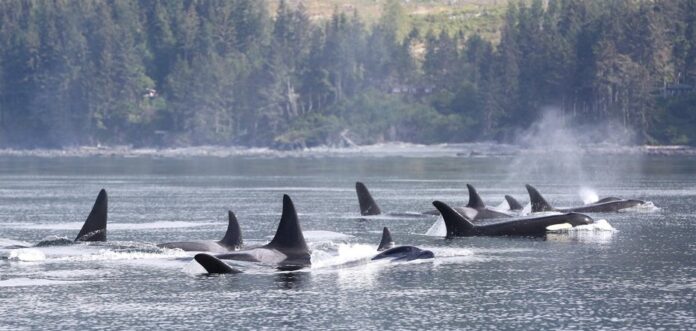All killer whales in Canada are facing some kind of risk, says a committee of scientific experts.
The Committee on the Status of Endangered Wildlife in Canada (COSEWIC) ranks the threats facing Canadian wildlife. At a recent meeting the committee concluded all orca populations are at risk.
Southern Resident killer whales, which eat mostly Chinook salmon, are most at risk and are ranked as Endangered, with only around 75 left. The population faces challenges finding enough food, along with pollution, increasing ship strikes, underwater noise, and inbreeding.
The Northern Resident population also eats mostly salmon. It’s doing a bit better and is slowly growing at 350 animals, but is still ranked as threatened. So is the transient population, which is growing the most and eats seals.
The offshore population, which hunts sharks, is also ranked as threatened.
Much less is known about the fifth population of killer whales in the Eastern Arctic and off the Atlantic coast. These whales likely number in the hundreds and range widely. Inuit report seeing more Killer Whales in the Arctic. As climate change causes increased environmental shifts in this region, there’s a need to research this population, which was assessed as Special Concern.
According to David Lee, Chair of COSEWIC, “Our committee tries to identify all wildlife species that might be at risk, from the majestic to the minute. Science and Indigenous knowledge are an integral part of society’s commitment to safeguard Canadian biodiversity.”






